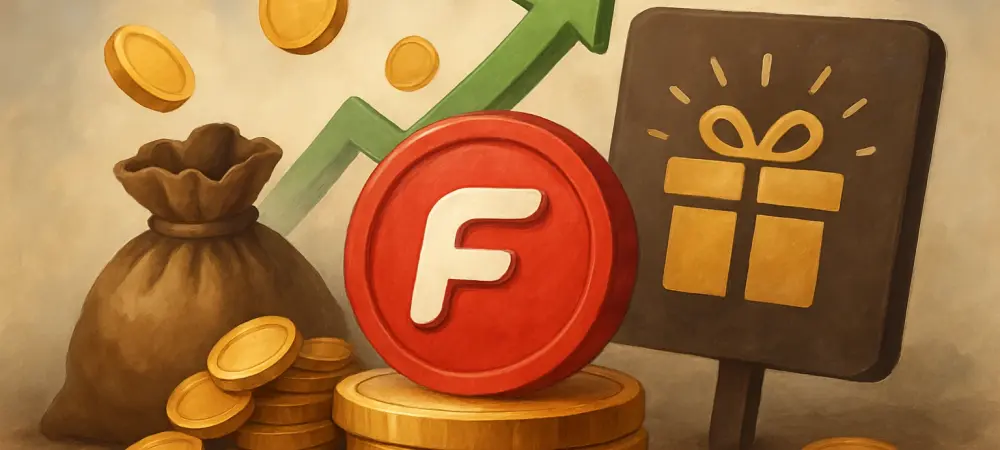Diving into the world of cryptocurrency innovation, I’m thrilled to sit down with a leading expert from the FUNToken team. With a profound understanding of tokenomics and a fresh perspective on supply management, our guest today is at the forefront of redefining how crypto projects can create value without resorting to traditional methods like token burns. We’re here to unpack FUNToken’s groundbreaking $5M giveaway and explore how their staking-based strategy is crafting a structural supply shock, fostering community engagement, and prioritizing long-term stability over fleeting hype.
Can you start by telling us what FUNToken’s $5M giveaway is all about and what inspired this bold move?
Absolutely, thanks for having me. The $5M giveaway is a unique initiative designed to reward our community while reshaping how our token circulates in the market. Essentially, participants can stake their $FUN tokens on our platform, 5m.fun, to become eligible for rewards from this massive prize pool. The idea came from wanting to create scarcity and value in a way that’s sustainable and inclusive, without destroying tokens. Our goal is to drive engagement, reduce active supply, and build a stronger, more committed holder base over time.
How does this giveaway actually work for participants who want to get involved?
It’s pretty straightforward. Holders stake their $FUN tokens into a smart contract on the Ethereum blockchain via our platform. Once staked, those tokens are locked and can’t be traded, which reduces circulating supply. In return, stakers qualify for rewards tied to specific price milestones between $0.01 and $0.10. Plus, even if those targets aren’t hit during the campaign, participants earn interest in $FUN, ensuring there’s always a benefit to staying engaged.
Unlike many projects that rely on token burns, FUNToken has taken a different route. What led to the decision to avoid burning tokens for scarcity?
We wanted to rethink the typical burn model because, while it can create a quick perception of scarcity, it often sacrifices flexibility and long-term utility. Burns permanently remove tokens from circulation, which can hurt liquidity and limit future options for the ecosystem. Instead, we opted for a staking mechanism that achieves a similar deflationary effect but keeps tokens active within the network—just not tradable. This way, we maintain liquidity potential while still tightening supply through participation.
Can you dive into what you mean by a ‘structural supply shock’ and how this approach creates that effect?
Sure. A structural supply shock, in our context, refers to a deliberate and sustained reduction in the tokens available for trading, but without any destruction. By encouraging holders to stake their $FUN, we’re effectively compressing the circulating supply. Currently, over 8.7 million tokens are staked globally, which means they’re out of the market for now. This creates upward pressure on value density, much like a burn, but it’s reversible and driven by community action rather than a one-time event.
Let’s talk about the price milestones tied to the rewards, like the range from $0.01 to $0.10. How did you settle on these specific targets?
We chose these milestones after careful analysis of market trends and our long-term vision for $FUN’s value. The range represents ambitious yet achievable goals that incentivize holding while pacing the release of rewards. It’s about creating a balance—motivating participants to stay in for the long haul without flooding the market if prices spike quickly. These targets act as checkpoints that align community effort with ecosystem growth.
How do the interest rewards play a role in keeping participants engaged over time?
Interest rewards are a key piece of the puzzle. They ensure that even if the price milestones aren’t reached by the campaign’s end, stakers still get something for their commitment. This steady payout in $FUN keeps people involved and discourages quick withdrawals, fostering a culture of patience and long-term thinking. It’s a way to build trust and show that we value every participant’s role in tightening supply.
You’ve described this model as ‘scarcity by participation.’ Can you unpack what that phrase means to you?
I love that term because it captures the essence of what we’re doing. Scarcity by participation means that the reduction in circulating supply isn’t forced or artificial—it’s a direct result of community choice. Holders decide to stake because they see personal benefits like rewards and interest. The more people join in, the scarcer the tradable supply becomes. It’s a self-reinforcing cycle where individual incentives drive collective value creation.
Your approach seems to emphasize stability over the short-term excitement of price spikes. Why focus on this kind of balance?
Stability is critical for building a resilient ecosystem. Traditional burns often lead to temporary hype—a quick rally followed by a drop as the effect fades. We’re aiming for something more enduring. By encouraging patient holding and predictable supply compression through staking, we reduce speculative trading and wild volatility. This creates a healthier market environment where value grows organically through community trust and consistent engagement.
What’s your forecast for how this non-destructive scarcity model could influence the broader crypto space in the coming years?
I’m really optimistic about its potential. If projects see that you can achieve deflationary effects without burns—through smart incentives and participation-driven models—I think we’ll witness a shift in tokenomics design. This approach prioritizes utility and community involvement, which could lead to more sustainable ecosystems across Web3. My hope is that in a few years, strategies like ours become a standard for balancing scarcity with flexibility, inspiring projects to think beyond quick fixes and focus on long-term value.

